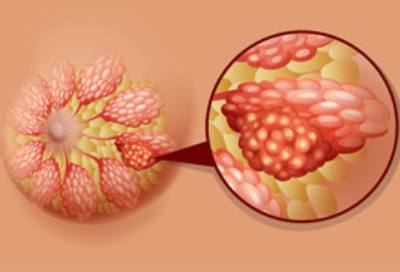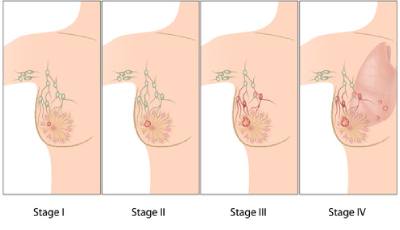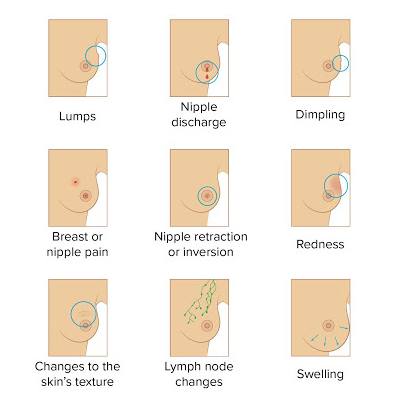Introduction
Breast cancer is cancer that forms in the cells of the breasts. Breast cancer affects one in eight women during their lives. No one knows why some women get breast cancer, but there are many risk factors.
Understanding Breast Cancer
Breast cancer is a disease characterised by the abnormal growth of cells in the breast tissue. It predominantly affects women but can also occur in men. The condition arises when cells in the breast mutate and multiply uncontrollably, forming a tumour.

Types of Breast Cancer
Breast cancer is a disease characterised by the abnormal growth of cells in the breast tissue. It predominantly affects women but can also occur in men. The condition arises when cells in the breast mutate and multiply uncontrollably, forming a tumour.
There are several different types of breast cancer, including :
- Ductal carcinoma
This begins in the milk duct and is the most common type.
- Lobular carcinoma
This starts in the lobules.
- Invasive breast cancer
Invasive breast cancer occurs when the cancer cells break out from inside the lobules or ducts and invade nearby tissue. This increases the chance of cancer spreading to other parts of the body.
- Noninvasive breast cancer
Noninvasive breast cancer develops when the cancer remains inside its place of origin and has not yet spread. However, these cells can sometimes progress to invasive breast cancer.

Causes of Breast Cancer
After puberty, a woman’s breast consists of fat, connective tissue, and thousands of lobules. These are tiny glands that produce milk for breastfeeding. Tiny tubes, or ducts, carry the milk toward the nipple.
Cancer causes the cells to multiply uncontrollably. They do not die at the usual point in their life cycle.
This excessive cell growth causes cancer because the tumour uses nutrients and energy and deprives the cells around it.
Breast cancer usually starts in the inner lining of milk ducts or the lobules that supply them with milk. From there, it can spread to other parts of the body.

Stages
There are different ways of staging breast cancer.
One way is from stage 0–4, with subdivided categories at each numbered stage. Descriptions of the four main stages are listed below, though the specific substage of a cancer may also depend on other specific characteristics of the tumour, such as HER2 receptor status.
- Stage 0:Known as ductal carcinoma in situ (DCIS), the cells are limited to within the ducts and have not invaded surrounding tissues.
- Stage 1:At this stage, the tumour measures up to 2 centimetres (cm) across. It has not affected any lymph nodes, or there are small groups of cancer cells in the lymph nodes.
- Stage 2:The tumour is 2 cm across, and it has started to spread to nearby nodes, or is 2–5 cm across and has not spread to the lymph nodes.
- Stage 3:The tumour is up to 5 cm across, and it has spread to several lymph nodes or the tumour is larger than 5 cm and has spread to a few lymph nodes.
- Stage 4:The cancer has spread to distant organs, most often the bones, liver, brain, or lungs.
Symptoms of Breast cancer
Signs and symptoms of breast cancer may include:
- A breast lump or thickening that feels different from the surrounding tissue
- Change in the size, shape or appearance of a breast
- Changes to the skin over the breast, such as dimpling
- A newly inverted nipple
- Peeling, scaling, crusting or flaking of the pigmented area of skin surrounding the nipple (areola) or breast skin
- Redness or pitting of the skin over your breast, like the skin of an orange

Risk Factor
Factors that are associated with an increased risk of breast cancer include:
- Being female
Women are much more likely than men are to develop breast cancer.
- Age
the risk rises as you get older. Increasing age. Your risk of breast cancer increases as you age.
- A personal history of breast conditions
If you've had a breast biopsy that found lobular carcinoma in situ (LCIS) or atypical hyperplasia of the breast, you have an increased risk of breast cancer.
- A personal history of breast cancer
If you've had breast cancer in one breast, you have an increased risk of developing cancer in the other breast.
- A family history of breast cancer
If your mother, sister or daughter was diagnosed with breast cancer, particularly at a young age, your risk of breast cancer is increased. Still, the majority of people diagnosed with breast cancer have no family history of the disease.
- Inherited genes that increase cancer risk
Certain gene mutations that increase the risk of breast cancer can be passed from parents to children. The most well-known gene mutations are referred to as BRCA1 and BRCA2.
These genes can greatly increase your risk of breast cancer and other cancers, but they don't make cancer inevitable.
- Radiation exposure
If you received radiation treatments to your chest as a child or young adult, your risk of breast cancer is increased.
- Obesity
Being obese increases your risk of breast cancer.
- Beginning your period at a younger age
Beginning your period before age 12 increases your risk of breast cancer.
- Beginning menopause at an older age
If you began menopause at an older age, you're more likely to develop breast cancer.
- Having your first child at an older age
Women who give birth to their first child after age 30 may have an increased risk of breast cancer.
- Having never been pregnant
Women who have never been pregnant have a greater risk of breast cancer than do women who have had one or more pregnancies.
- Postmenopausal hormone therapy
Women who take hormone therapy medications that combine oestrogen and progesterone to treat the signs and symptoms of menopause have an increased risk of breast cancer. The risk of breast cancer decreases when women stop taking these medications.
- Drinking alcohol
Drinking alcohol increases the risk of breast cancer.
Diagnosis
Tests and procedures used to diagnose breast cancer include:
- Breast exam
Your doctor will check both of your breasts and lymph nodes in your armpit, feeling for any lumps or other abnormalities.
- Mammogram
A mammogram is an X-ray of the breast. Mammograms are commonly used to screen for breast cancer. If an abnormality is detected on a screening mammogram, your doctor may recommend a diagnostic mammogram to further evaluate that abnormality.
- Breast ultrasound
Ultrasound uses sound waves to produce images of structures deep within the body. Ultrasound may be used to determine whether a new breast lump is a solid mass or a fluid-filled cyst.
- Removing a sample of breast cells for testing (biopsy)
A biopsy is the only definitive way to make a diagnosis of breast cancer. During a biopsy, your doctor uses a specialised needle device guided by X-ray or another imaging test to extract a core of tissue from the suspicious area. Often, a small metal marker is left at the site within your breast so the area can be easily identified on future imaging tests.
- Breast magnetic resonance imaging (MRI)
An MRI machine uses a magnet and radio waves to create pictures of the interior of your breast. Before a breast MRI, you receive an injection of dye. Unlike other types of imaging tests, an MRI doesn't use radiation to create the images.
Homoeopathy and breast cancer
Homeopathy, a holistic system of medicine, offers a complementary approach to managing breast cancer. While it does not replace conventional treatments like surgery, chemotherapy, or radiation therapy, homoeopathy can be used alongside these treatments to alleviate symptoms, reduce side effects, and improve overall well-being.
Homoeopathic Medicines for Breast Cancer
- Carcinosinum
- This remedy is favourable for individuals with personal or family history of cancer.
- Severe pain
- Hardness or lump in the breast
- Hardness of uterus or uterine fibroids
- Offensive discharge from breast
- Bleeding and pain in breast
- Indigestion and gas formation
- Bone and joints symptoms
- Suicidal tendencies
- Conium Maculatum
- This remedy is suited to the individual who are indifferent by nature and are suffering because of grief.
- Hard tumours in the breast
- Severe piercing pain
- Stitching pain in the nipples
- Symptoms get worse on deep breathing and walking
- Weakness and trembling
- Painful and heavy breast before and during periods.
- Swelling and ulceration of the glands in the underarms.
- Nodules in the breast even if there is no milk yet.
- Lax and shrunken breast
- White discharge after passing urine
- Inflammation of ovaries
- Weakness of the nerves to the extent of paralysis.
- Ovaries appear bigger than normal in ultrasound scan .
- Phytolacca
- Painful and hard breast
- Purplish colour on breast
- Hard nodules felt in the breast
- Enlargement of small group of lymph node present in armpit
- Painful and cracked nipples.
- Inversion of nipples.
- Bloody discharge from nipples.
- Heat and swelling of mammary glands.
- Abscess ( pus filled eruption ) may occur in mammary glands
- Nipples pain spread to the whole body when breastfeeding.
- Painful breast before and during periods .
- Pain in ovarian region
- Asterias Rubens
- Nerve pain in the breast
- Continuous dull pain in the breast , which may extend to the left arm and fingers.
- Hard, knotted glands in the underarms .
- Swelling which is more commonly seen in the left breast
- Feeling as if breast pulled inwards .
- Retraction of nipples .
- Ulcerative stage of breast cancer
- Numbness in the left hands and fingers.
- Symptoms like pain become worse on movements .
- Thuja Occidentalis
- Warts on the skin.
- Tearing pain felt all over the body and in the breast.
- Pain worse on resting and improves in dry weather
- Rapid weight loss.
- Lumps in the breast
- Sore and painful lumps near nipples.
- Predominantly left sided symptoms.
- Cannot tolerate winter and cold weather .
- Retraction of nipples.
- Pain in left ovary.
- Pulsatilla
- Changeable symptoms
- Weeping while describing the symptoms
- Symptoms better in open air
- Discharge from nipples , if present , is yellow in colour .
- Sensitiveness of organs
- Fat rich food worsens the symptoms
- Suppression of periods leads to hormonal issues
- Ulcer in the chest region
- Generalised chilliness
- Mother weeps everytime the child is put to breast
- Psorinum
- Swollen breast
- Painful breast
- Sore nipples with oozing of acrid fluids
- Burning ulceration in the breast and nipples
- Discharge is so acrid that it burns and excoriate the glands
- Severe intolerable itching
- Dryness and eczema
- Sleeplessness due to excessive itching
- Arsenicum album
- Ulceration on the breast
- Weakness that is out of proportion to the pain
- Fear that the person will die of the disease
- Anger and anxiety that taking the medicine is pointless as the person is going to die
- The individual is restless with pain and keep moving from one place to another
- Extremely offensive and bloody discharge from nipples .
- Burning sensation in breast
- Disturbed sleep due to anxiety
- Symptoms get worse in wet weather , after midnight and from cold drinks .
- Symptoms improve on application of heat
Benefits of Homoeopathic Treatment
- Individualised Care: Homoeopathy recognizes that each person is unique. A homoeopath will assess your symptoms, medical history, and lifestyle to prescribe a personalised treatment plan tailored to your needs.
- Gentle and Natural: Homoeopathic remedies are derived from natural substances and are known for their minimal side effects. They work in harmony with the body, promoting self-healing and overall well-being.
- Holistic Approach: Homoeopathy takes into account not only the physical symptoms but also the emotional and mental aspects of an individual. It aims to restore balance at all levels, providing comprehensive care.
- Long-Term Relief: By addressing the underlying causes of Ulcerative Colitis,homoeopathy strives to achieve long-term relief and improved quality of life.
Patient Review
Consulting a Homoeopath
When considering homoeopathic treatment for breast cancer, it is essential to consult with a qualified Sanjivani homoeopathic practitioner specialising in oncology. During a consultation, the Sanjivani homoeopath will conduct a comprehensive evaluation, create an individualised treatment plan, and work collaboratively with conventional medical providers. Regular follow-up appointments will monitor progress and adjust treatment as needed.
Sanjivani Homeopathy Clinic USP
- No homoeopathy Dietary Restrictions:
Allows patients to enjoy foods like onion, garlic, and coffee, ensuring a stress-free treatment journey.
- 24/7 Online Consultations:
Enables convenient access to doctors with detailed counseling, history management, and follow-ups.
- Highly Skilled Team:
Experienced BHMS and MD doctors, supported by multilingual and professional staff.
- Patient-Centric Care:
Simplifies treatment with modern, adaptable solutions and clear communication.
Click Here for Detailed "Sanjivani USP"
FAQ's
- What is homoeopathy ?
Homoeopathy is a holistic science which belives in the law of Similia Similibus Curenter i.e Like Cures Like .It was discovered by Dr Samuel Christian Hahnemannn in 1796.
- Is there any side effects of homoeopathy?
As homoeopathic medicines are made from natural substances this medicines have no side effects and are completely safe to consume
- Is there any diet restriction to take homoeopathic medicines?
There are no diet restrictions for homoeopathic medicines. One should only avoid eating or drinking any liquid other than water at least 30 minutes before and after taking homoeopathic medicines.
Click Here for "Frequently Asked Questions."
Conclusion
In conclusion, homoeopathy can play a valuable role in supporting individuals with breast cancer by addressing symptoms, improving quality of life, and promoting overall well-being. When integrated with conventional medical care, homoeopathic treatment offers a holistic approach to managing breast cancer. However, it is essential to remember that homoeopathy does not replace conventional treatments but complements them. Consultation with a qualified Sanjivani homoeopath can provide personalised care and guidance tailored to individual needs and circumstances.
Disclaimer : The information provided in this blog is for educational purposes only and should not be considered medical advice. Please consult with a qualified healthcare professional before starting any treatment for Breast Cancer or any other medical condition.


